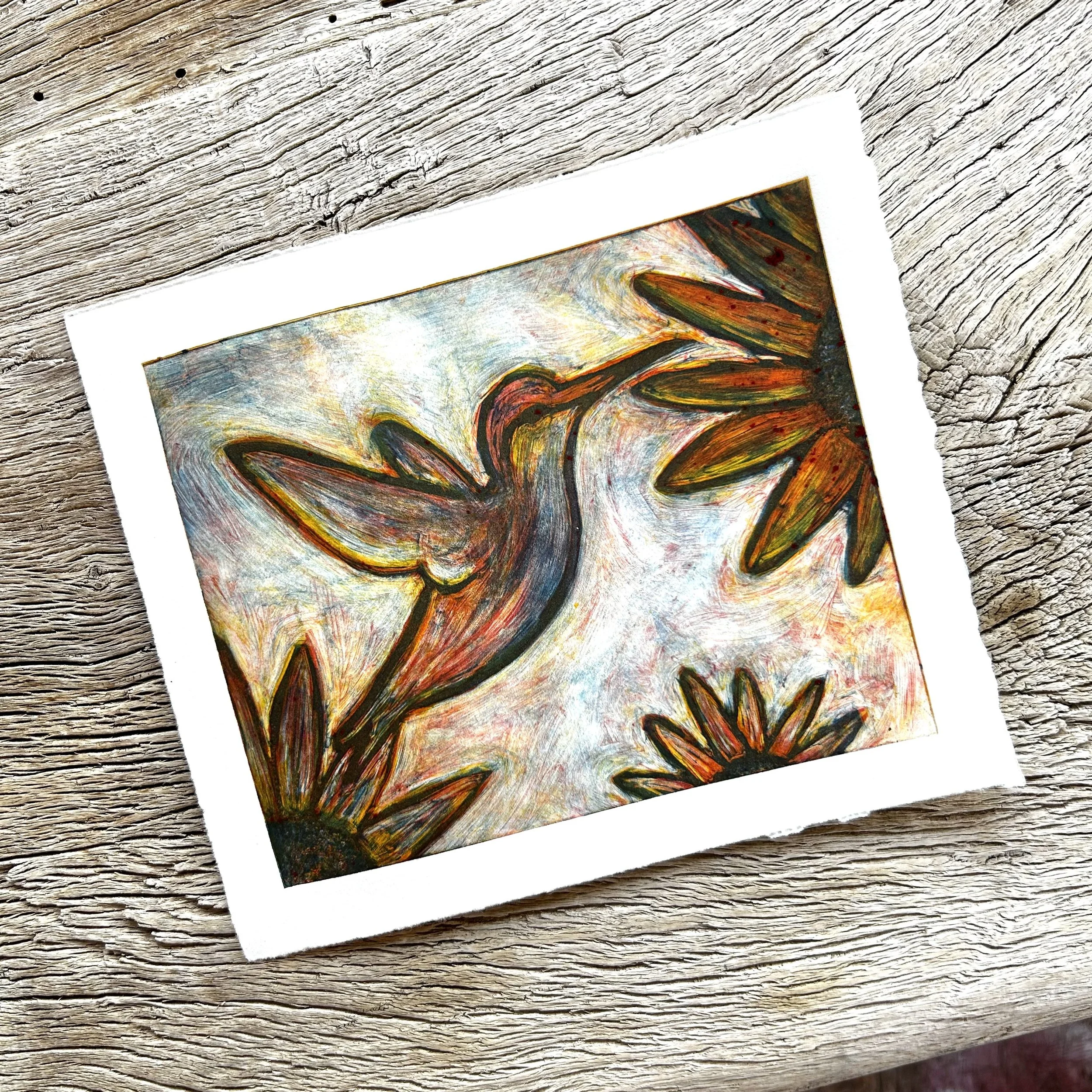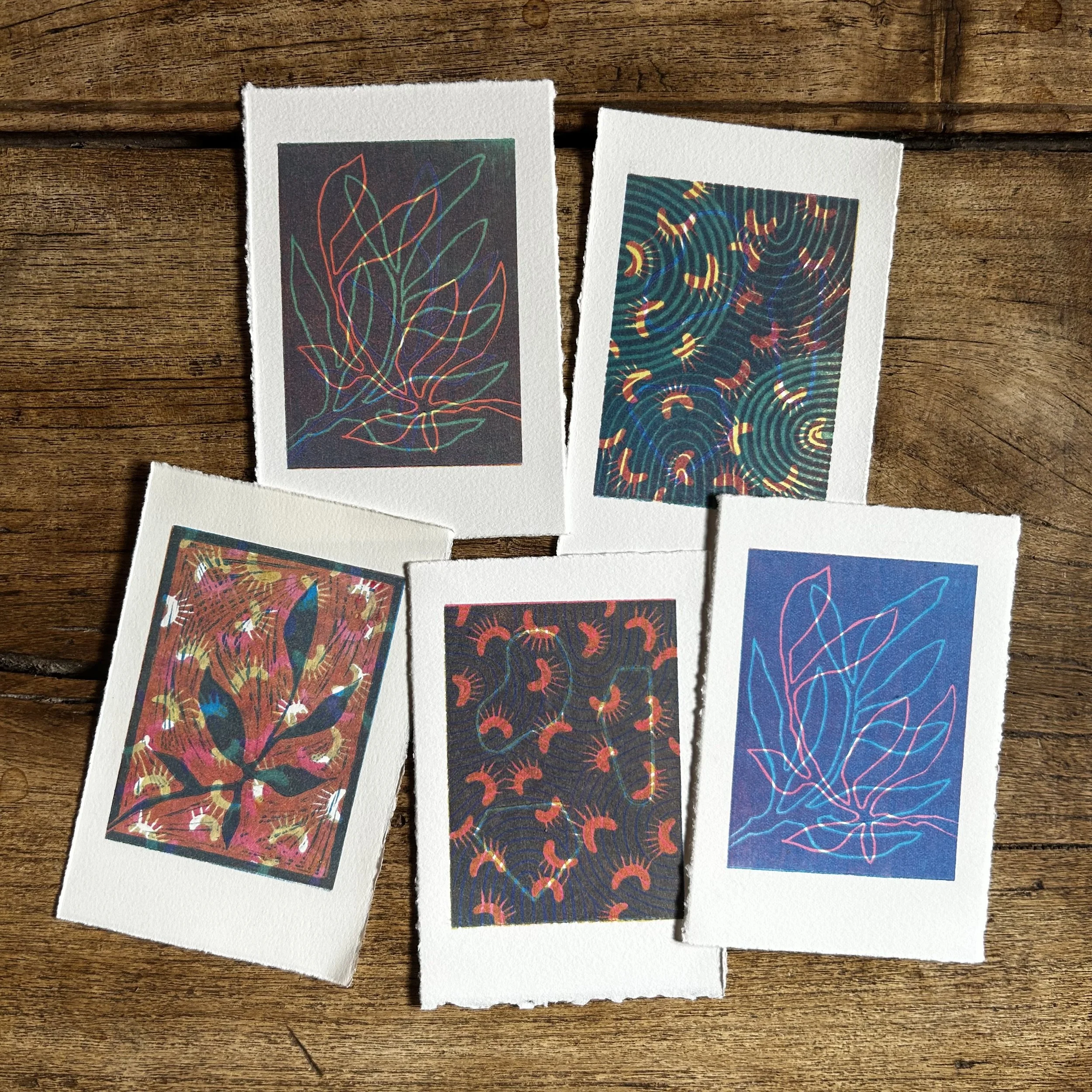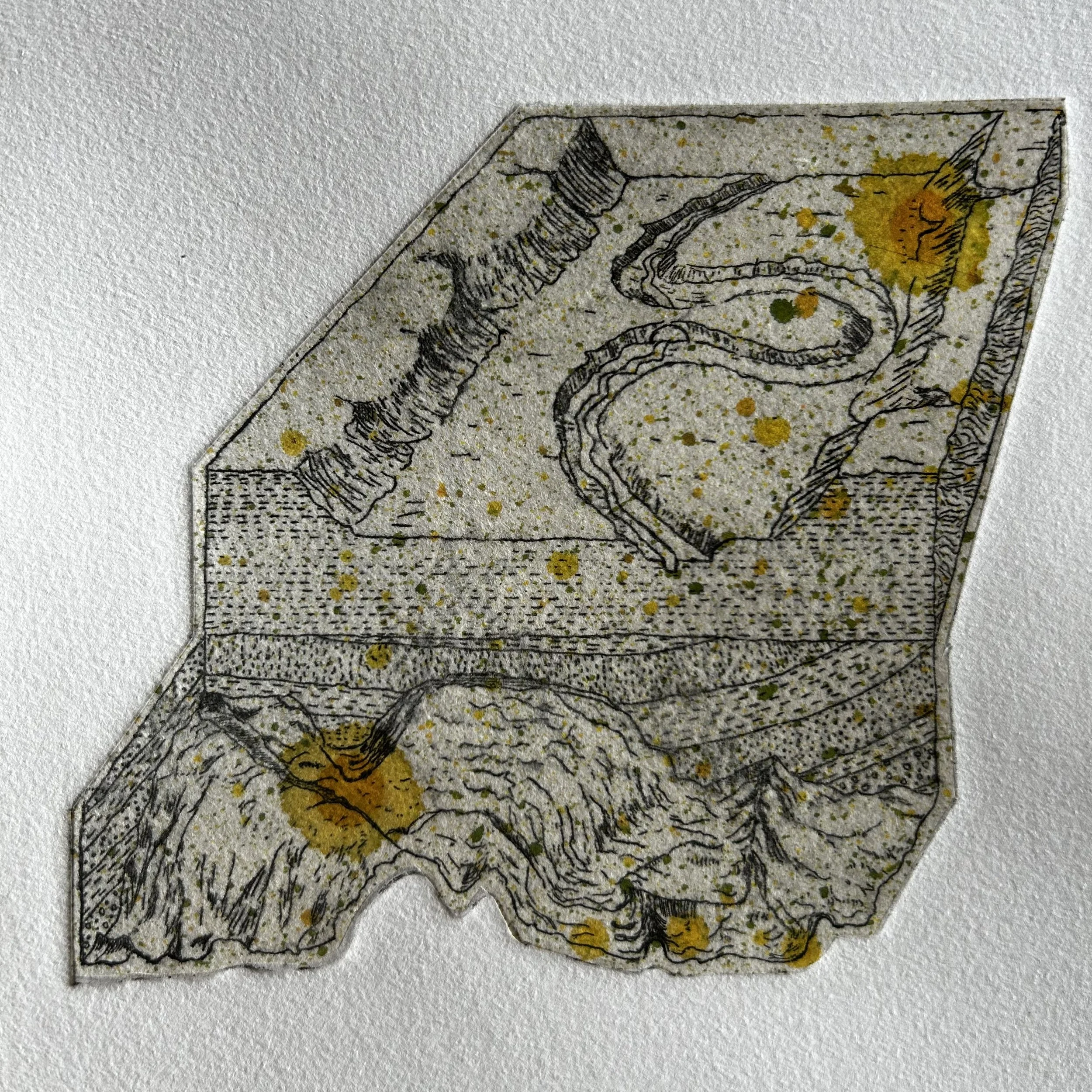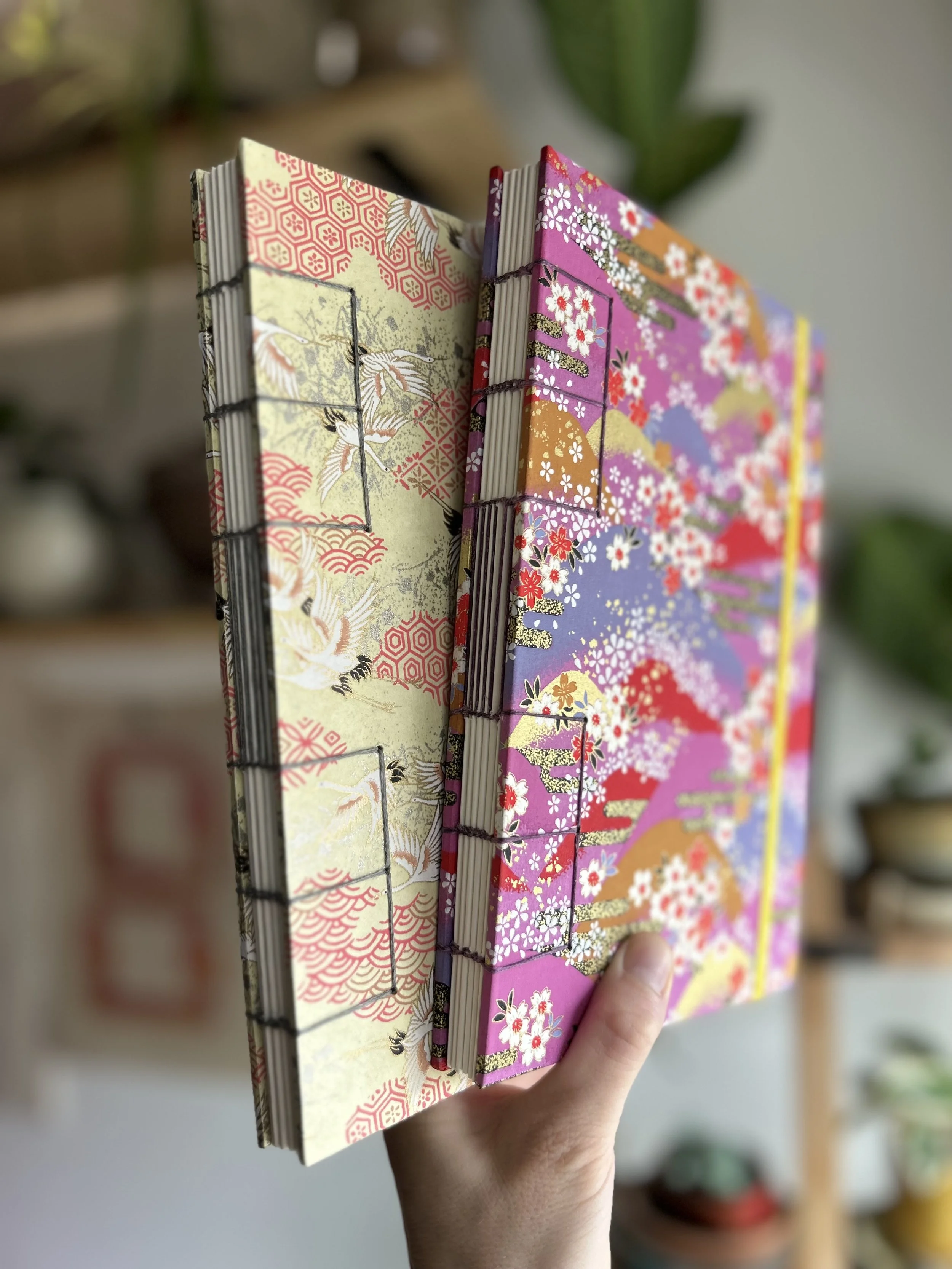
Printmaking Techniques
Below are some of the core techniques Mandee and Hugo love to teach. They’re always experimenting and finding new twists on traditional printmaking. Participants are encouraged to explore, play, or focus on precision—whatever fits your goals. However, we do ask that participants work within the structure of the workshop rather than pursuing independent projects, so everyone can benefit from shared instruction and studio time.
Paper is provided for each project and some experimentation, but if you tend to use a lot, please bring extra. For recommendations, contact Mandee. is short, sweet, and to the point.
Monoprint/Monotype
Monotypes are unique prints made by pressing paper against a painted or inked surface. Each monotype can only be pulled once, producing a singular impression, though a faint “ghost” print can sometimes be made. In this workshop, we use multiple plates, layering them to create multiple hues. The process is painterly, allowing for both spontaneous and deliberate mark-making. Each monotype is different, offering endless possibilities for experimentation, variation, and beautiful, one-of-a-kind results.
Relief
Relief printing is a technique where the image is created by carving into a raised surface with knives, gouges, or other tools. Traditionally done on wood or linoleum, the cut-away areas (negative space) remain the color of the paper and are integral to the design. The final print is a mirror image of the block.
In this workshop, we use Shina plywood, a finely grained wood often used in Japanese mokuhanga printmaking. Its smooth texture allows for detailed carving, and the natural wood grain can sometimes appear in the printed image, adding subtle texture. Participants will explore layers of multiple blocks, combining them to create interesting color combinations, textures, and depth. This method allows for a lot of experimentation and variation, producing different results with each print if desired.
Intaglio Etching & Drypoint
A technique in which the image is incised into a metal surface, filled with ink and transferred to paper. The term “Intaglio”, meaning “to engrave” or “cut into,” refers to the process by which an image is created by gouging, biting, or incising lines into the surface of a metal plate. The print is produced by filling the recessed marked and lines in order to transfer the image to damp paper. In the final piece, the image will print in reverse from the design on the plate and the ink will stand proud of the surface of the paper. Etching is an abrasive substance that bites or cleans away areas of a plate or block. In etching, usually ferric chloride or copper sulphate used to bite a line into a metal plate. Drypoint uses a hard needle to create a scratch across the plate surface. This action creates a burr and flanges of metal or plastic fold back from the edge of the scratch. It is these flecks of metal that retain the body of ink. The characteristic of a drypoint is softer, more furry line in comparison to the controlled clarity of an engraved or etched line. The drypoint is very fragile and generally does not sustain more than 20 good impressions.
Chine Collé
Traditionally, the printing of an image on a very light, delicate paper that is then adhered to a stronger, supporting paper. The application of color using colored paper rather than the use of ink on multiple plates.
The example to the right shows Thai Kozo paper, decorated with ink and then chine collé between the printmaking paper and intaglio plate to add both color and texture.
Bookmaking & Mixed Media
*note: this is not generally a technique taught in the workshop but can accommodate with private groups.
Bookmaking and other mixed media techniques are often incorporated, time permitting. Techniques such as hardcover, softcover, Japanese, and Coptic stitch binding can be accommodated for private groups with ample notice. Typically, 1–2 days can be spent exploring creative book projects. Private groups also have the option to design a workshop tailored to their interests, incorporating any of the techniques above or ones previously explored with Mandee or Hugo.




